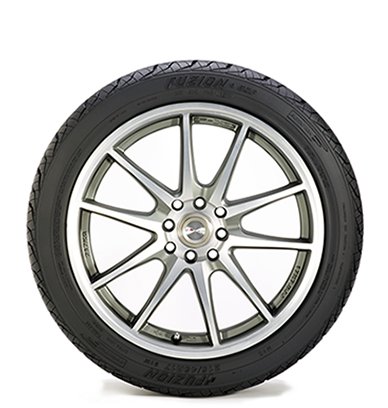Ultra-high-performance tires can handle the extra horsepower of sports cars, but they’re pricier and don’t last as long as regular all-season tires
 Who wouldn’t want a new car with a little added boost? That’s why automakers create performance versions of many popular models. They usually share the body style of the base model but come equipped with upgrades such as a more powerful engine, more powerful brakes, a sport-tuned suspension, and ultra-high- performance (UHP) tires.
Who wouldn’t want a new car with a little added boost? That’s why automakers create performance versions of many popular models. They usually share the body style of the base model but come equipped with upgrades such as a more powerful engine, more powerful brakes, a sport-tuned suspension, and ultra-high- performance (UHP) tires.
Now about those tires. . . . Like the rest of the enhancements in those sporty models, UHP tires really can improve the performance of a vehicle. They enhance a car’s grip and cornering capability, and better dissipate heat—a tire’s worst enemy. But they also come with a trade-off: They tend to wear out faster than regular all-season tires usually found on family cars.
UHP tires can not only wear out faster but also be pricier to replace than regular all-season tires. The 18-inch UHP models we tested ranged from $79 to $225; regular all-season tires were $64 to $121 in the 16-inch size we tested.
UHP tires have been around for decades but were traditionally found on high-end sports cars. Now more and more manufacturers are offering them on performance-tuned versions of mainstream vehicles, such as the Buick Regal GS, Chrysler 300S, and Ford Fiesta ST. Even the Chevrolet Impala and Lincoln MKZ come in versions that can be outfitted with UHP tires. They now represent about 5 percent of the new-car market.
If you’re considering a performance version of a new car, it’s important to check the specs or ask the dealer whether the sporty new ride comes with UHP tires to avoid any surprises. Better yet, check the tires yourself. (Learn how to read a tire sidewall in our tire buying guide.)
If you already own a car that’s designed to use UHP tires, you shouldn’t try to switch to lower-speed-rated tires when it comes time to buy replacements.
Gene Petersen, Consumer Reports’ tires program manager, says: “UHP tires optimize handling and grip on dry and wet roads, allowing the vehicle to safely reach ever-increasing performance limits. UHP tires are designed to handle the increased speeds, torque, and g-forces that the extra horsepower, enhanced brakes, and sports-tuned suspension produce.”
Putting lower-performing tires on a high-performance car is like forcing a sprinter to run in clogs: You’ll definitely slow him down—and you might break one of his ankles.
So stick with UHP tires if your car is already equipped with them. But that doesn’t mean you need to replace them with the same brand and model. In fact, you might find longer-wearing or better-performing tires in our ratings, which can help guide you to the best UHP tires for your car.
Built for Speed, Not Longevity
We fitted UHP tires to eight 2015 Ford Mustangs and logged 16,000 miles per tire over public roads in Texas for our treadwear test. Despite rotating the tires and checking inflation and alignment every 1,000 miles, we found that the UHP tires wore out relatively quickly.
UHP tires come in summer, winter, and all-season variants. As you might expect, UHP summer tires are optimized for warm weather and are designed to provide the ultimate performance in dry and wet stopping as well as in cornering. But they lose grip as temperatures drop, and they deliver a harsher, noisier ride than regular all-season tires. In our treadwear tests, UHP summers lasted, on average, about 34,000 miles, with some projected to wear out in just 25,000 miles.
UHP all-seasons have slightly less grip than UHP summer tires in warm weather, but they offer decent traction in a wide range of weather conditions. UHP all-seasons averaged about 49,000 miles in our treadwear tests. In comparison, regular all-season tires averaged 69,000 miles, with some lasting for 90,000 to 100,000 miles.
Performance winter/snow UHPs provide better grip than all-season tires in snowy and icy conditions, but they have less grip on dry or wet roadways. They’re identified by a mountain and snowflake symbol on the sidewall, and come in the larger sizes required by performance-oriented cars.
Source: Consumerreports
